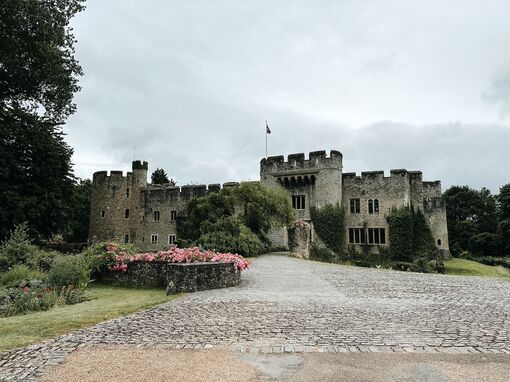
David & Karianne
David & Karianne
Venue History

The origins of Allington Castle date back to "The Anarchy" (1135–1153), a period of civil unrest when an unauthorized fortification was first built on the site. This early structure was dismantled later in the century when the monarchy reasserted control. By the 13th century, the site had become a fortified manor house, constructed with royal permission and later modified by successive owners, blending medieval and Tudor architectural styles.
In 1281, Stephen de Penchester, a notable figure of the time, received royal approval to “embattle” the manor house. He added crenellations, marking the structure as a true castle and enhancing its defensibility. Ownership then passed to the influential Cobham family and, in 1491, to the Wyatt family, who transformed the castle into a more comfortable mansion.
Allington Castle is steeped in Tudor history, with Sir Thomas Wyatt—both a skilled diplomat and one of England's earliest sonneteers—entertaining illustrious guests here. Wyatt is credited with introducing the sonnet form to English literature, likely inspired by his diplomatic missions to Italy. Around 1530, Wyatt hosted Henry VIII and Anne Boleyn in the castle’s great hall, during a period when he and Anne were close friends, with rumors hinting at unrequited affection. This gathering would have been a grand event, marked by feasting and entertainment. The castle also hosted other influential figures, including Henry VII, Cardinal Wolsey, and Catherine Parr.
Allington’s story takes another dramatic turn with Sir Thomas Wyatt’s son, also named Thomas, who famously led the Wyatt Rebellion against Queen Mary I in 1554. His goal was to prevent her marriage to Philip II of Spain, fearing it would subordinate England to Spanish influence. Though unsuccessful, this rebellion remains a significant chapter in the castle’s history.
Today, Allington Castle is surrounded by forty-two acres of beautifully landscaped grounds, complete with a scenic moat that has guarded it for centuries. A modern lake, flanking both sides of the approach causeway, enhances the grand entrance, and the grounds feature expertly restored gardens with ponds, fountains, and a traditional tiltyard garden. Inside, the castle’s interiors are tastefully furnished in the character of its medieval heritage, offering a unique glimpse into the elegance and resilience of England’s storied past.